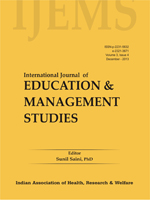Performance Evaluation of Desiccant Seed Dryer for Drying Fenugreek (Trigonella Foenum-graecum) Seeds
Subscribe/Renew Journal
In this study fenugreek (Trigonella foenum-graecum) seeds of variety HM-57 were dried in solar regenerated desiccant seed dryer. In this dryer, seeds can be dried in deep bed at a safe temperature for good shelf-life, germination and vigour index. The dryer has following significance over common methods of drying, generally vegetable seeds are dried in shade, which has very low drying rate and can be harmful to the seeds. Under natural drying conditions, micro organisms may develop, as moisture takes longer to be removed. Also in natural drying seeds holds moisture for longer period than advisable, due to this there is acceleration in respiration rate which causes a C02 release and water vapour and causes a significant decrease in physiological quality of seeds. The dryer has two chambers i.e. air conditioning chamber and seed drying chamber. It operates in seed drying and desiccant regeneration mode. Moisture removal from drying air has been done using silica gel desiccant. Fenugreek were dried with hot and dehumidified air at five different drying air temperatures i.e. 3 8, 40,42,44 and 46° C and at five different air flow rates i.e., 1,1.2,1.4,1.6 and 1.8 m3/min.. Germination percentage of fenugreek seeds varied from 78 - 67% as temperature varied between 38-46° C, and vigour index varied from 1349.4 - 911.2. After this study, dryer was found to be better alternative for drying high priced vegetable seeds.
Keywords
Desiccant Drying, Germination Percentage, Regeneration, Vigour Index.
Subscription
Login to verify subscription
User
Font Size
Information



